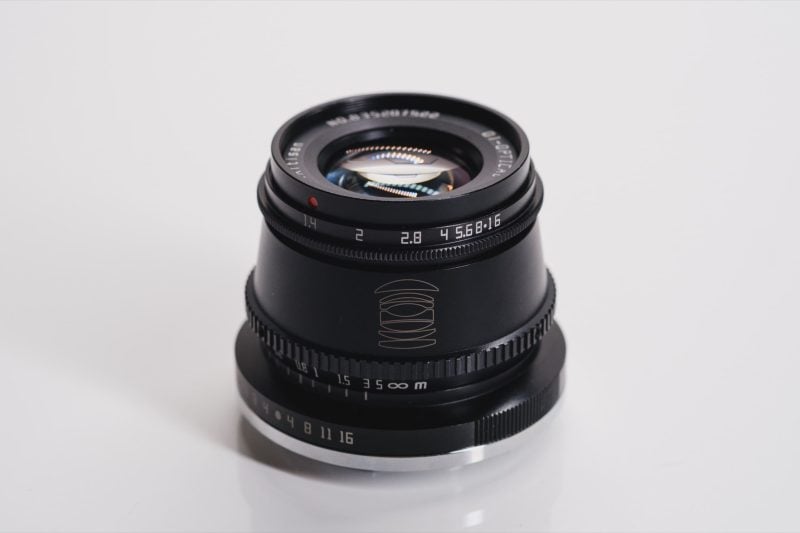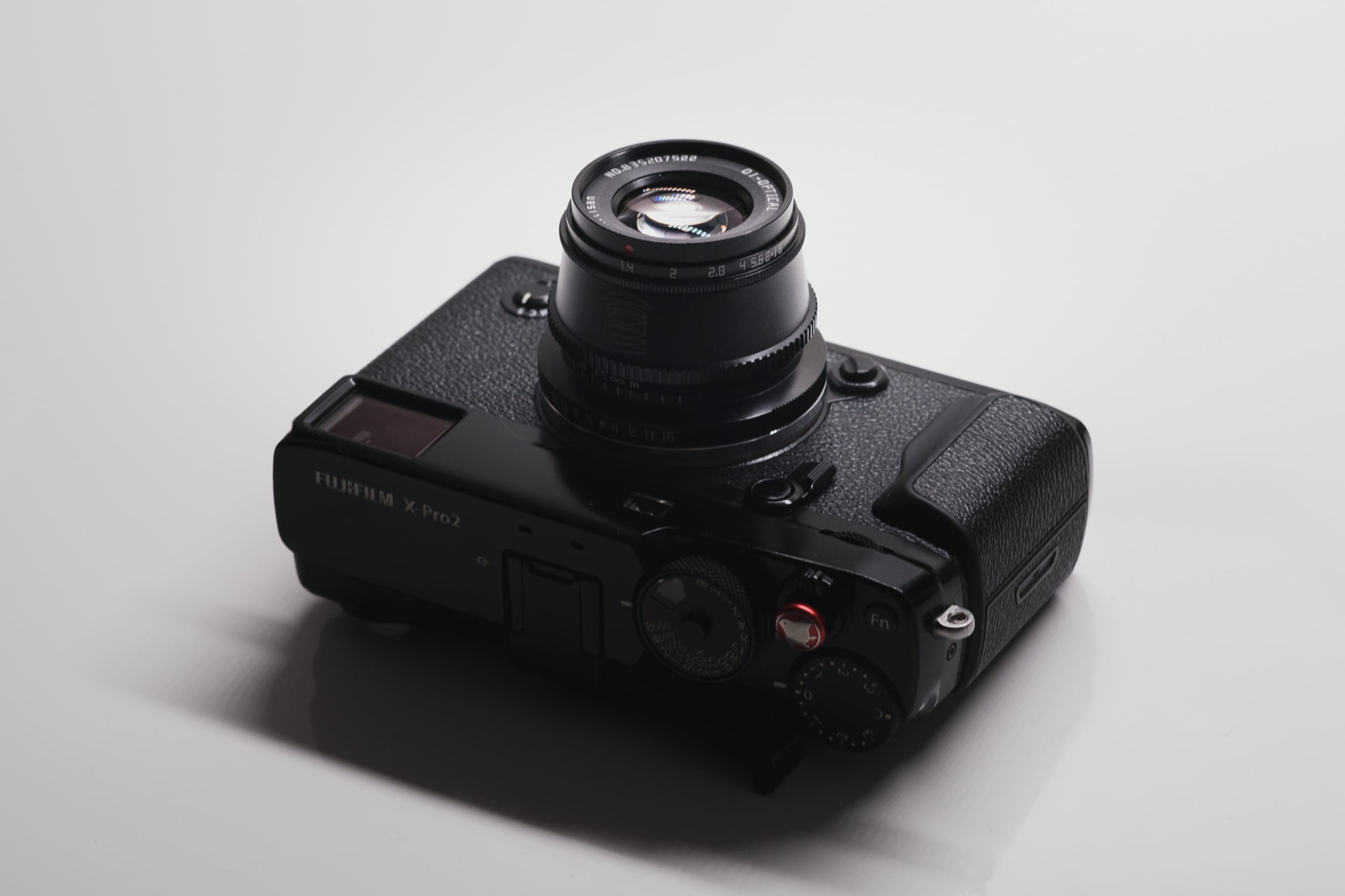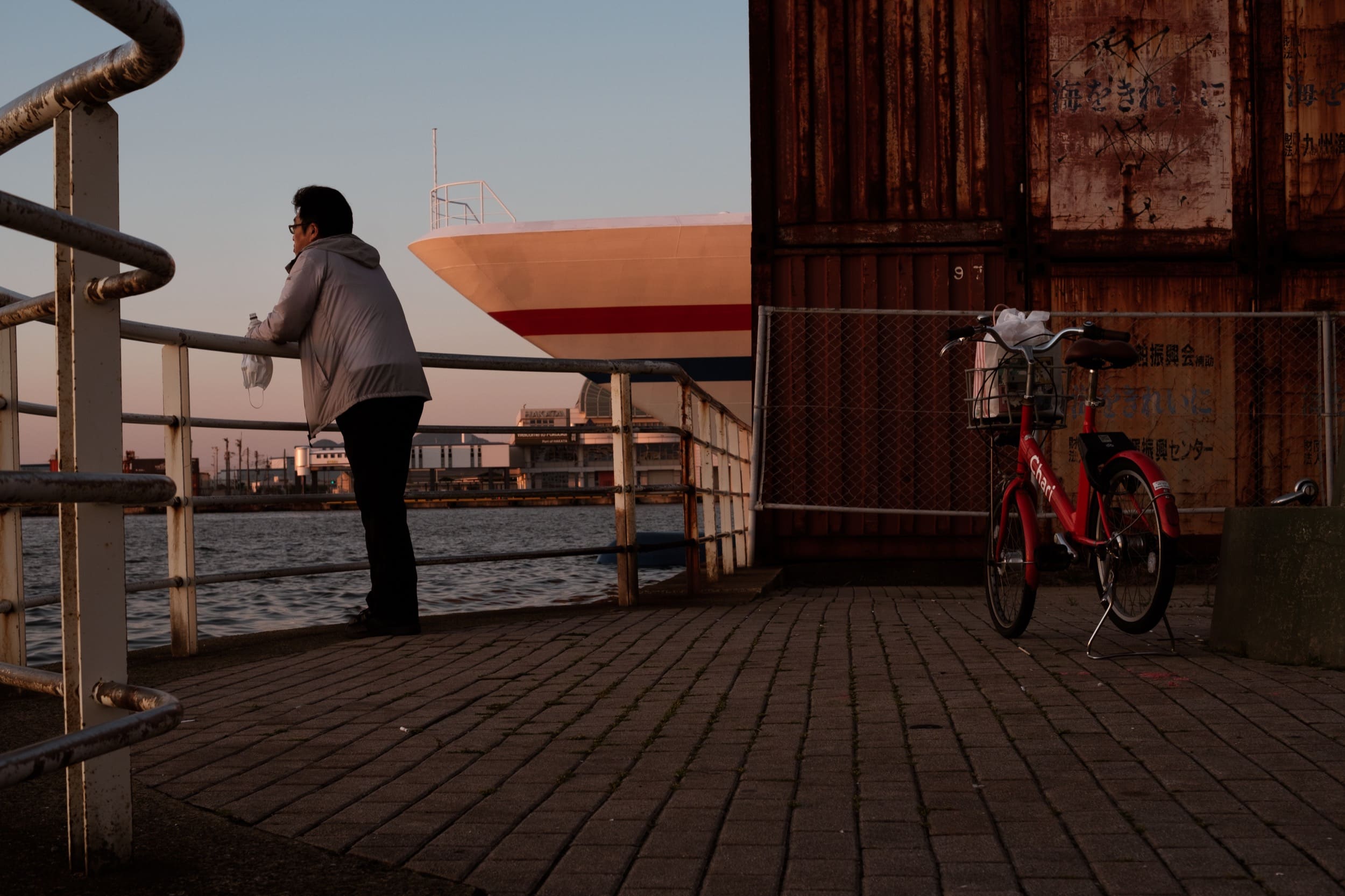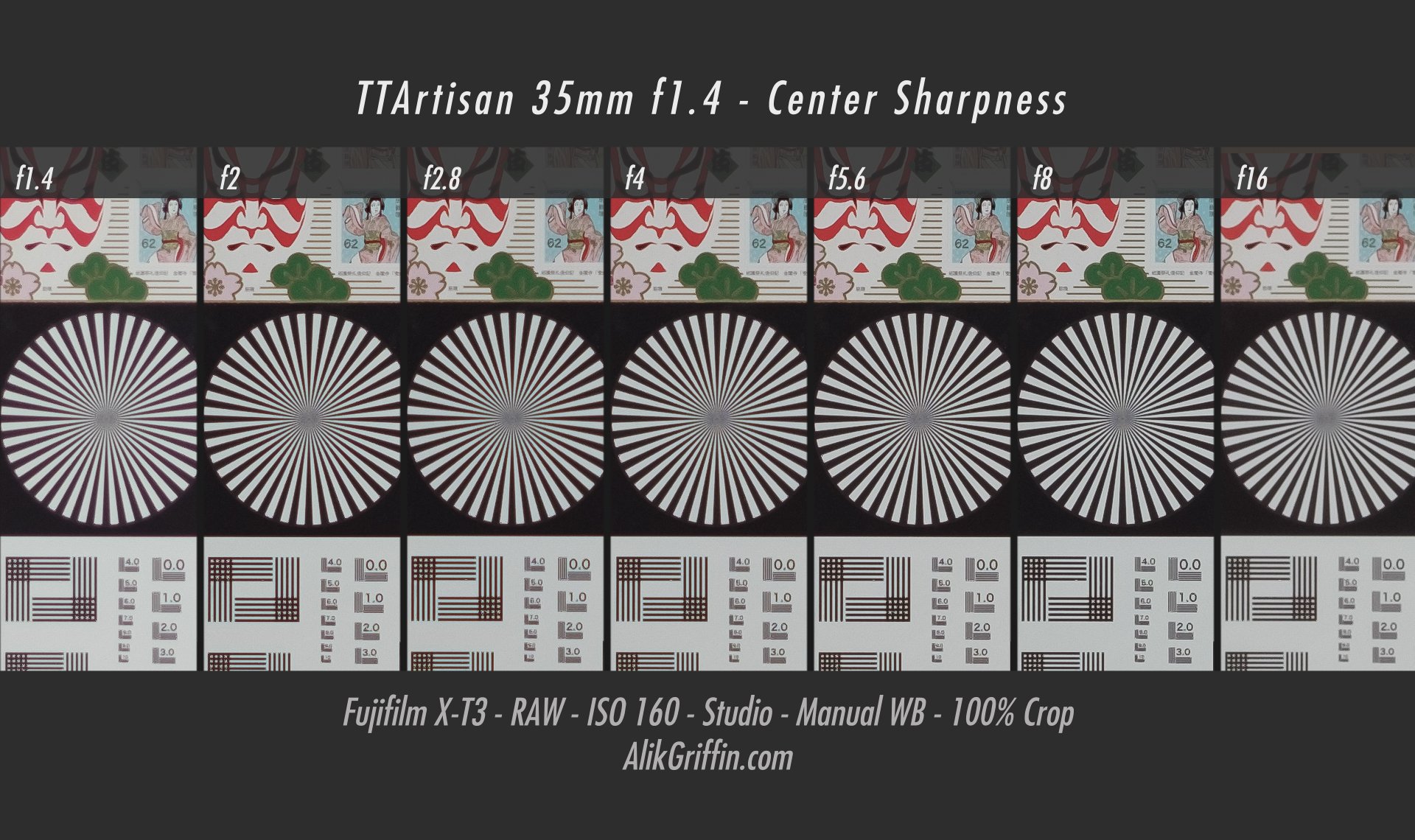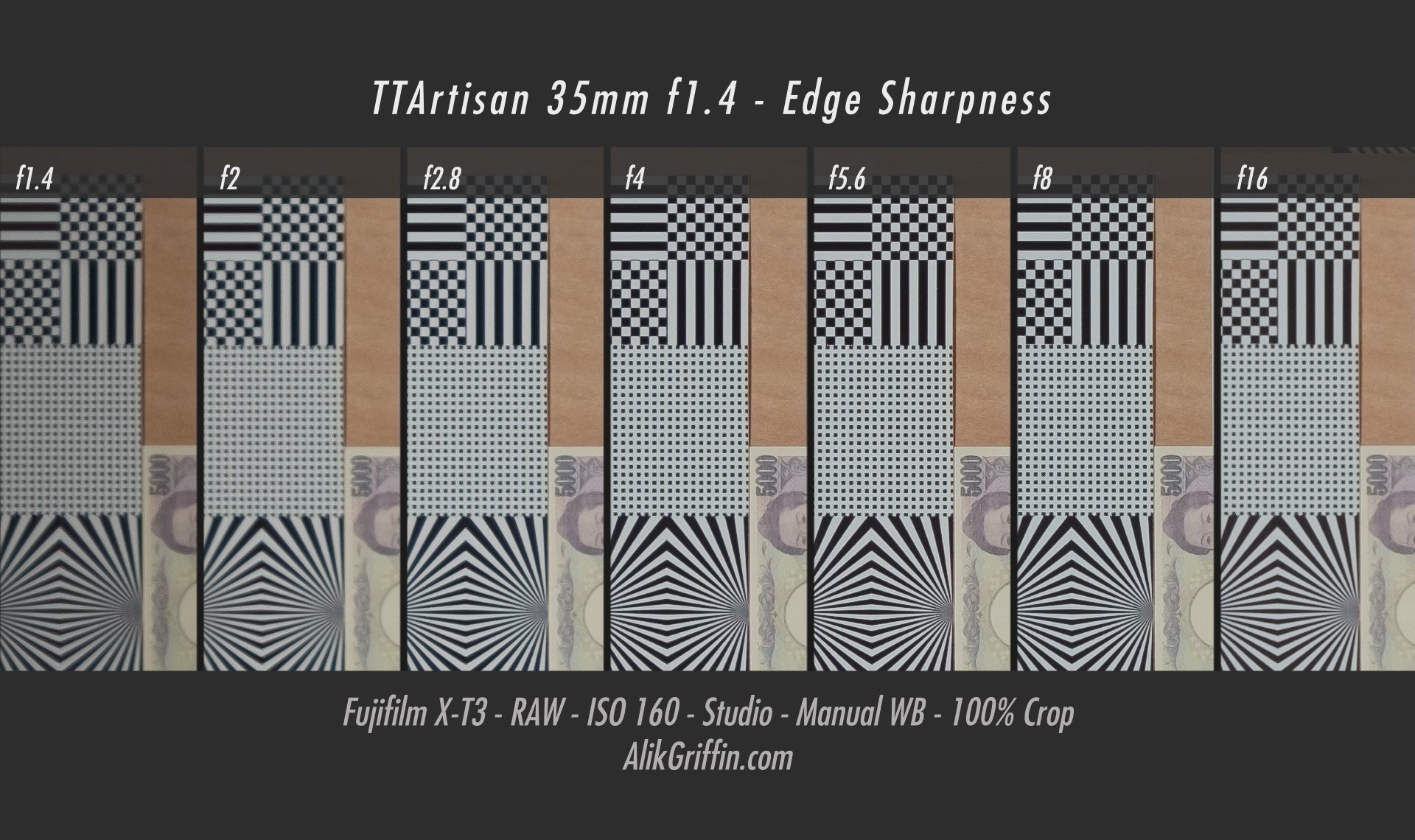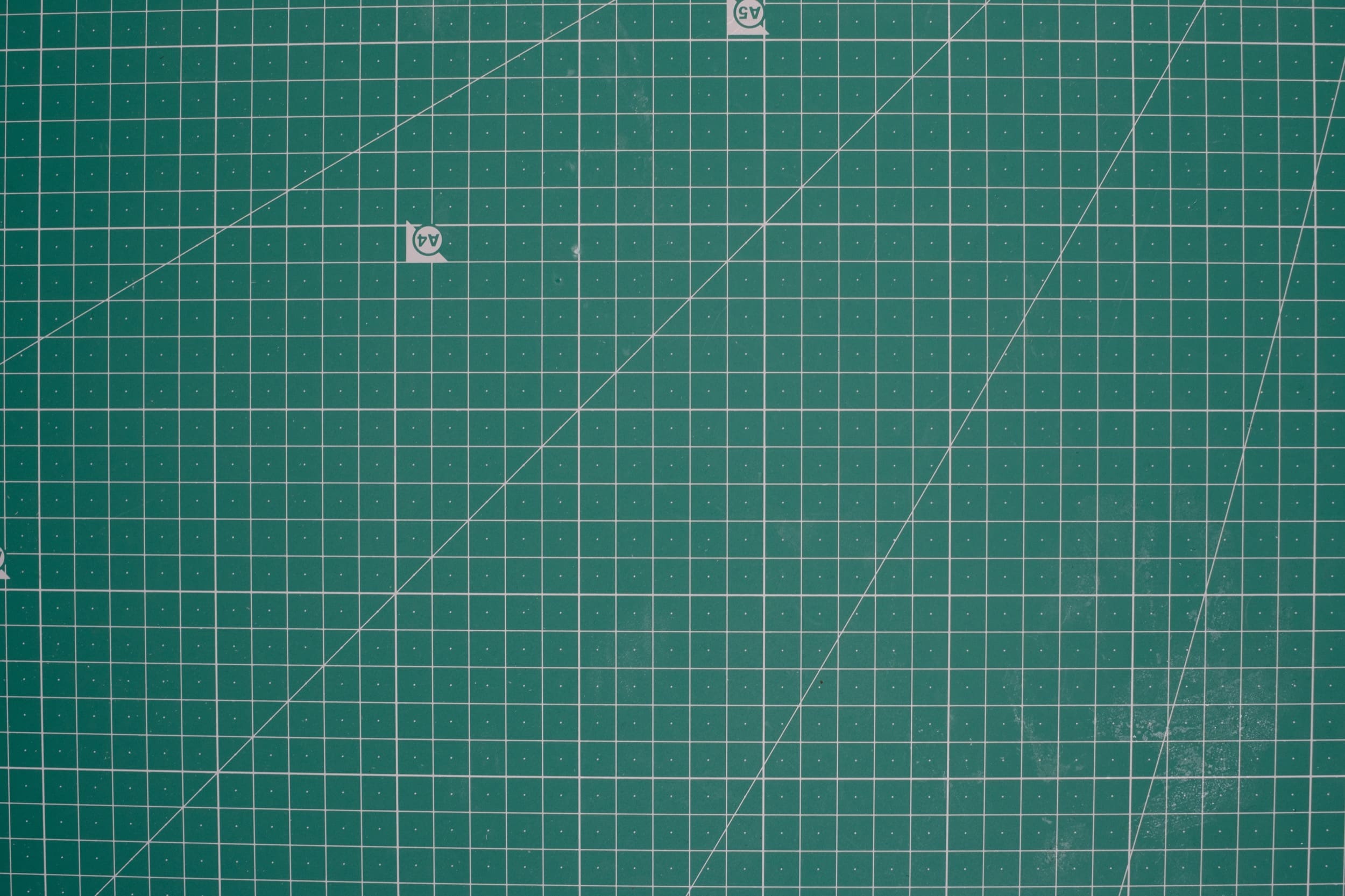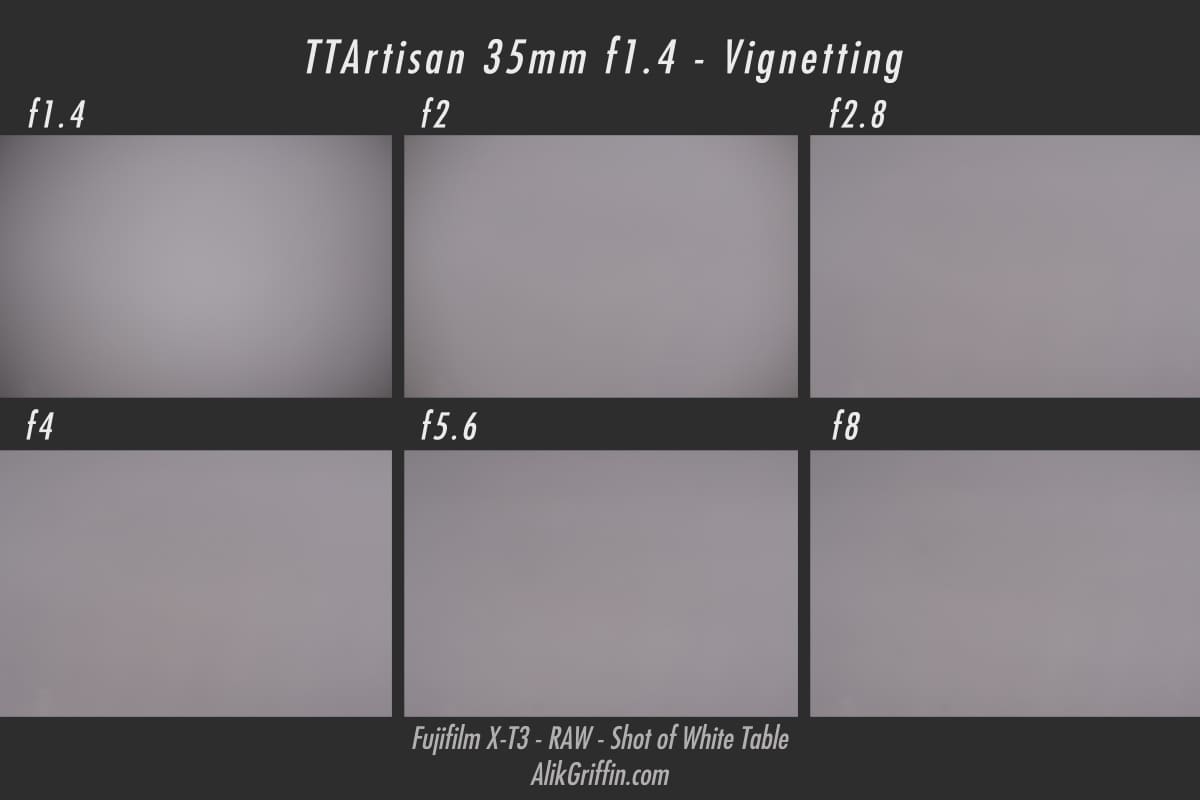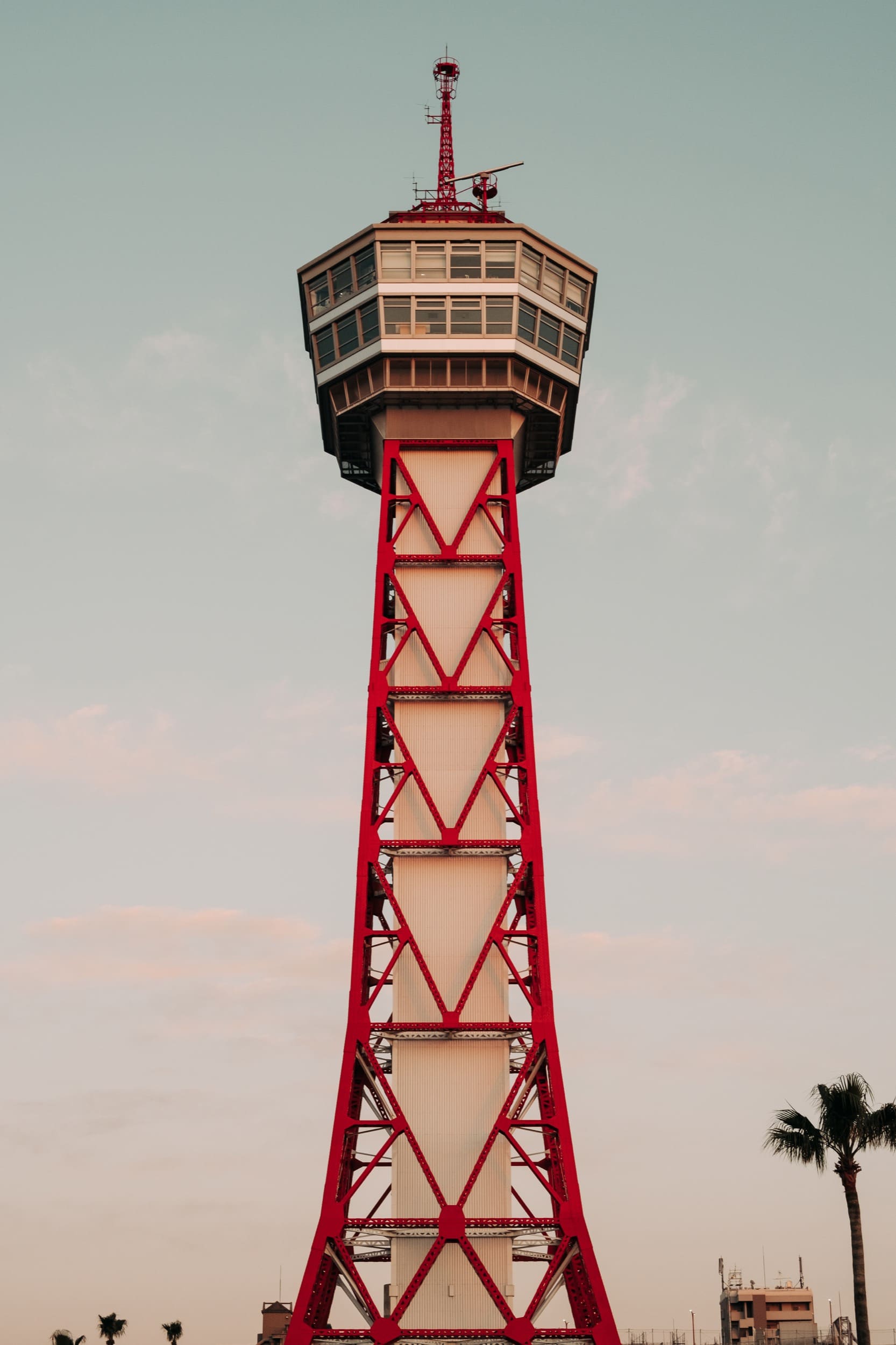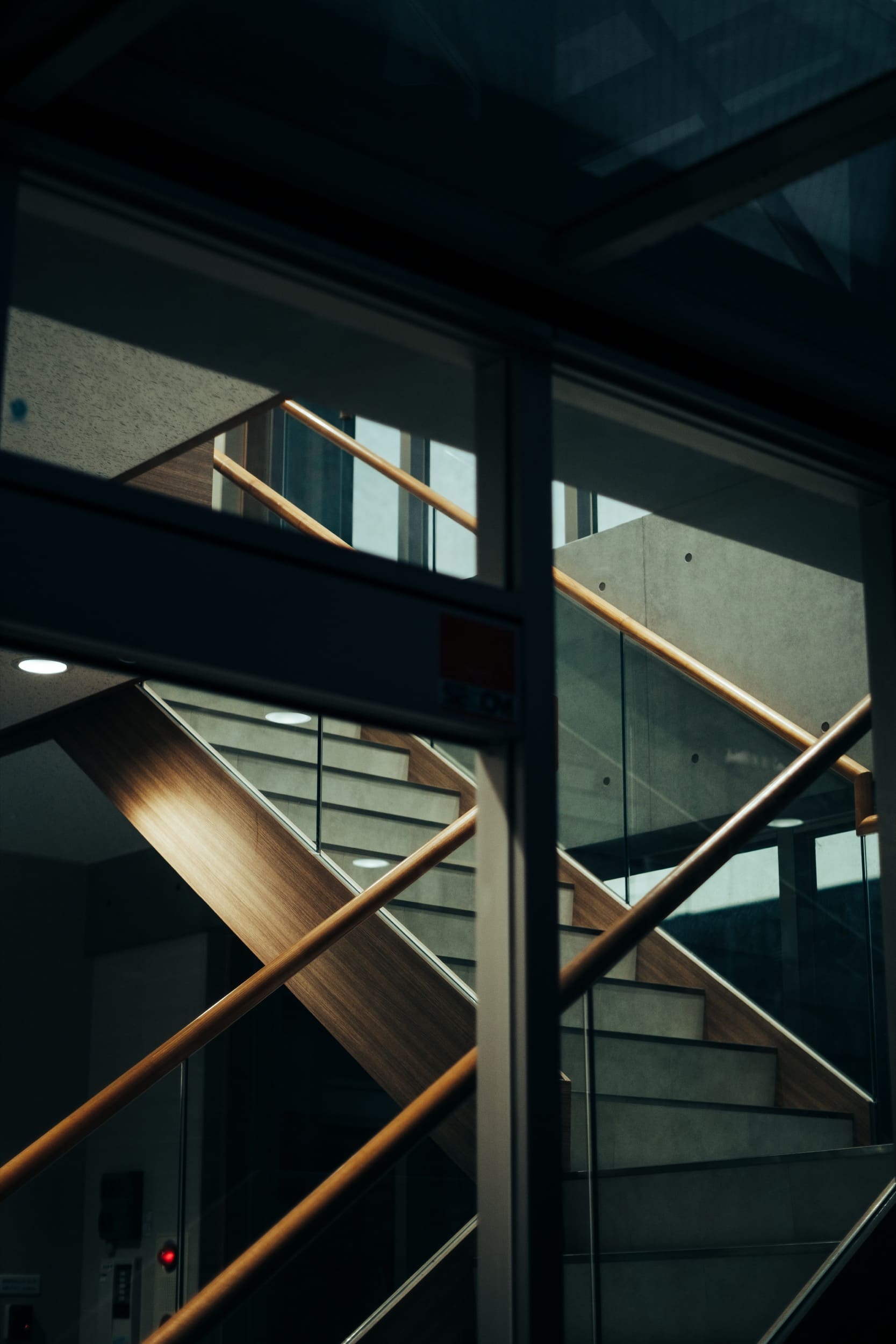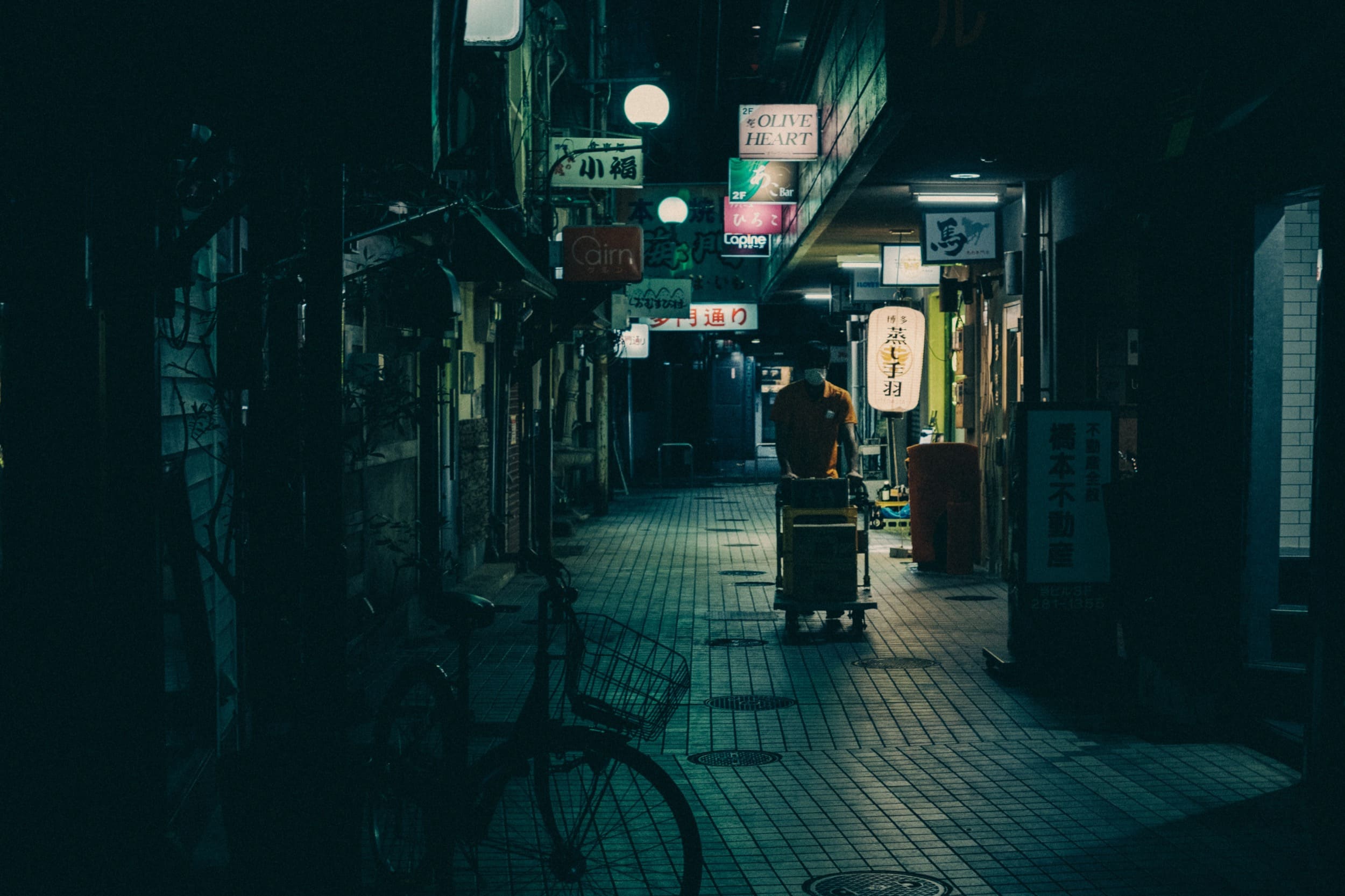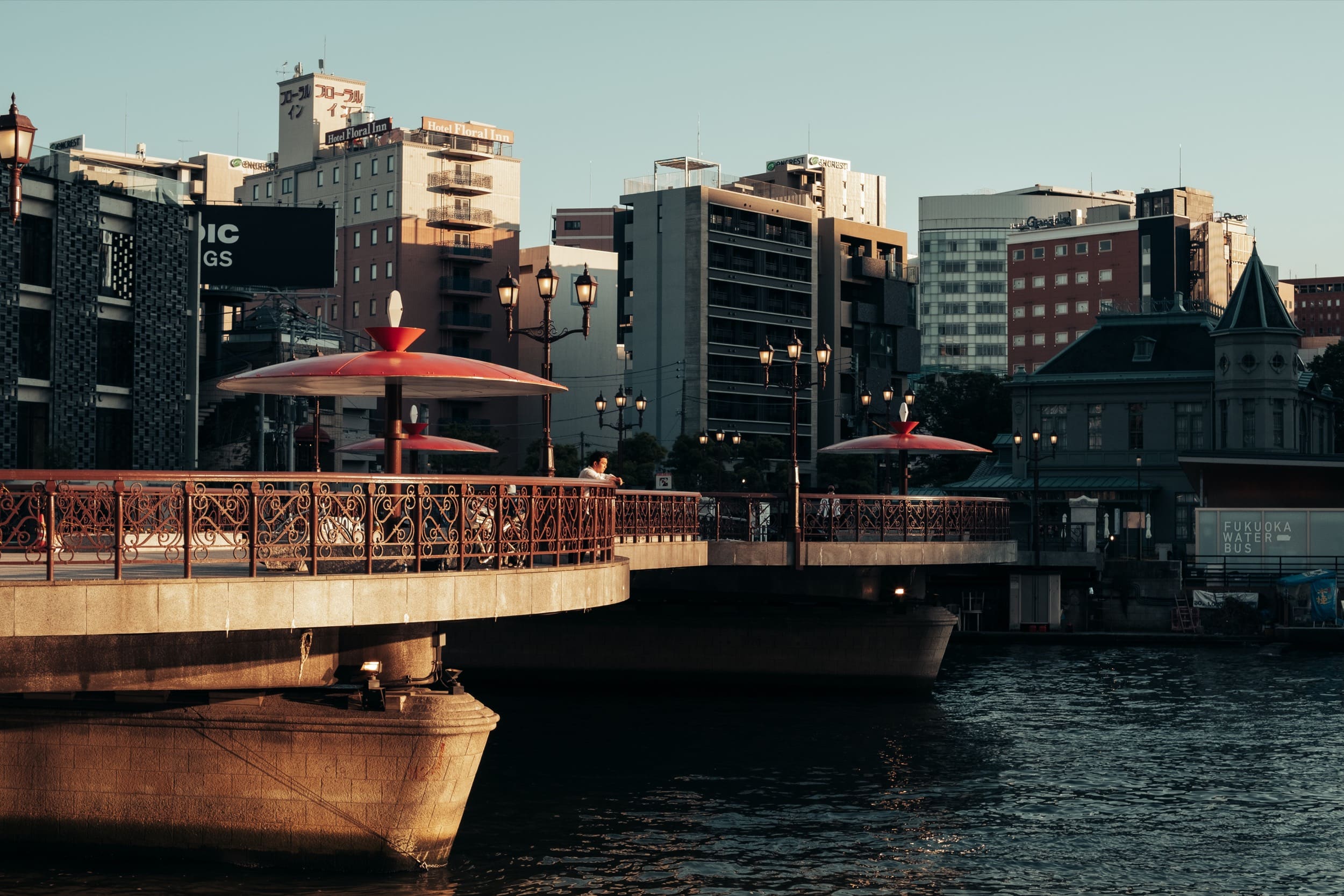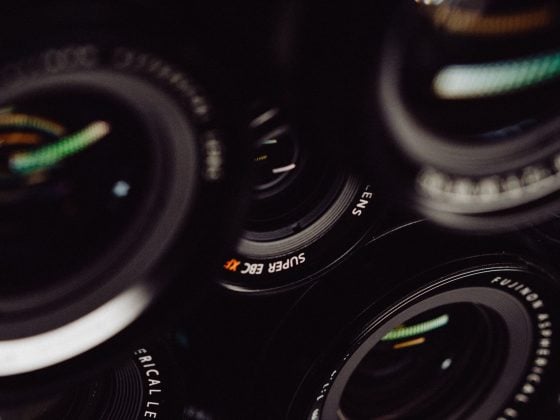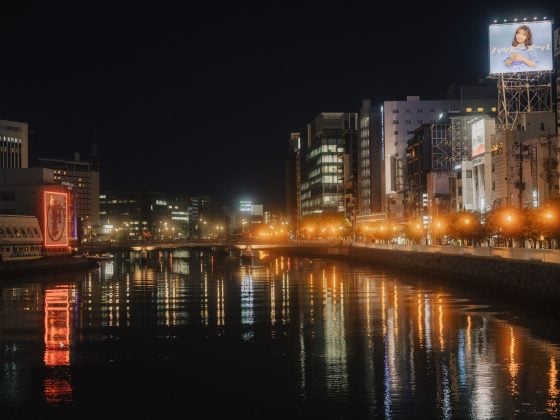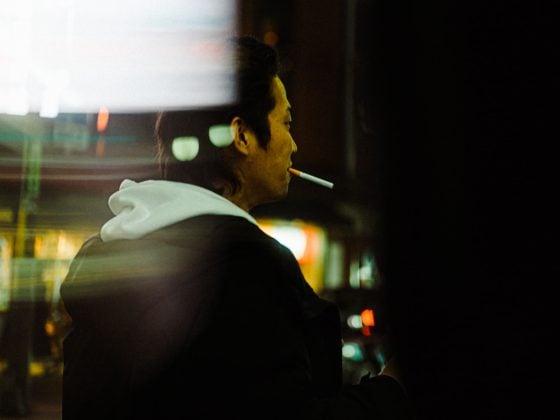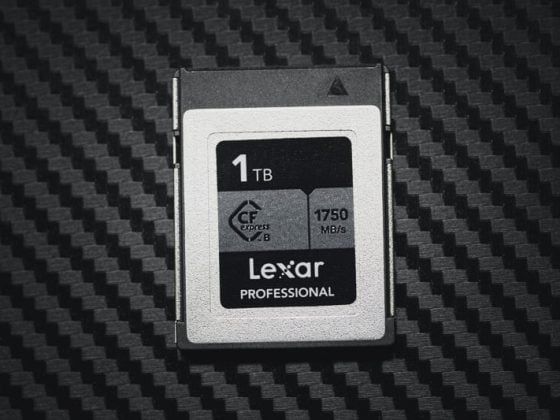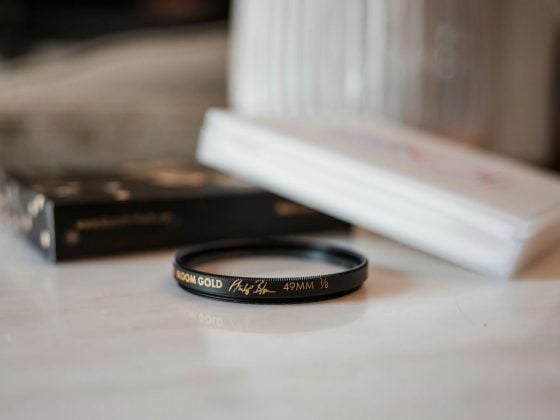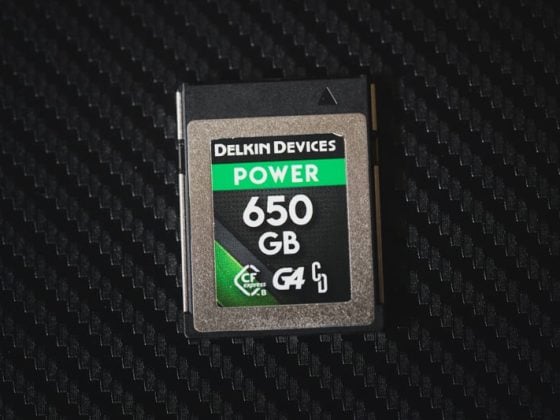The TTArtisan 35mm f1.4 is a compact, all-manual, all-metal prime lens for APS-C and micro four-thirds camera systems. The lens uses 7 elements in 6 groups to produce a nice classic rendering with a 10-bladed aperture for soft bokeh even at higher apertures.
Pros: Decent center sharpness when wide open, clickable aperture ring, nice build that’s fun and easy to use, vignetting is well controlled, only minor CA.
Cons: Some distortion, softer corners, and edges at faster apertures.
To sum up this lens in one sentence, I would say, it keeps the classic qualities in the rendering like the other sub $100 lenses, although the clickable aperture rings, larger size, and great multi-coatings make it a little more versatile with improved performance compared to the other lenses in this class.
Sentence number 2, if you want a cleaner, classic look, this is the one.
I was getting asked a lot which lens is better this one or the Pergear 35mm f1.6. There are some pros and cons to each and each photographer will have to consider those for what they want.
Here is a quick technical comparison. TTArtisan 35mm f1.4 vs Pergear 35mm f1.6
TTArtisan 34mm f1.4 Review
TTArtisan, not to be confused with 7Artisans has been rolling out new designs for the APS-C mount system.
There are now three lenses for Fujifilm, the 50mm f1.2, which I reviewed here, this TTArtisans 35mm f1.4, and a new TTArtisan 17mm f1.4.
Compared to the other cheaper brands, like 7Artisans, Meike, etc, the TTArtisans are a bit more expensive, but also a little bit better.
There are two reasons for this,
They have a little bit better builds, using clickable aperture rings, and overall feel slightly better mechanically. You’ll notice 7Artisans, Meike, Brightin Star, and sometimes Pergear will share similar physical designs, sometimes they only mix up the aperture blades, or the coatings. TTArtisan is doing its own thing.
It also almost seems like TTArtisan has access to better optics or coatings. But don’t quote me on this, I’m just some dude on the Internet and I haven’t had any good intel dumps on what these Chinese companies are up to in a while.
I say this because when looking at their other lenses, they sometimes use more advanced optical formulas. Sometimes using ED elements or ultra-high refractive elements. No aspherical elements in their APS-C lineup, at least not yet, but also their coatings seem to be a little nicer than the other brands in this class.
Table Of Contents
See the Price
TTArtisan 35mm f1.4 – Amazon / Pergear
How do the TTAritsan lenses compare to the other sub-$ $100 lenses?
I actually like these the most of all the cheaper lenses now. They just handle better in most situations, both mechanically, and optically when shooting into bright lighting.
This is not to say the other brands are dead to me, they still do have some great characteristics, and they shouldn’t be ignored. I still love the way those Pergear lenses flare and the Kamlan 50mm f1.1 II still has a character that can’t be touched.
But the TTArtisan 50mm f1.2 is probably the most practical 50mm manual focus lens you can buy right now, both in terms of price and performance, and now I think I have to say the same thing about the TTArtisans 35mm f1.4, it’s just great for the price, compared to the other lenses like it. As an example, it does f1.4 well, whereas the Meike 1.4 did not.
TTArtisans 35mm f1.4 First Impressions
The build quality is great, I love the look and style, it pairs amazingly with the X-Pro2 and is a ton of fun to use, especially since the aperture ring has half-stop clicks up until f4 where it then switches to full stops, but you don’t get f11. It jumps from f8 to f16, and you don’t want to use f16 because of the bad diffraction. So you’re limited to f8, which on APS-C is fine, at least for our current cameras with their current resolution, 26MP at the time of this review.
The lens will telescope out when focusing and extend in length.
The lens also comes with a metal lens hood that screws on.
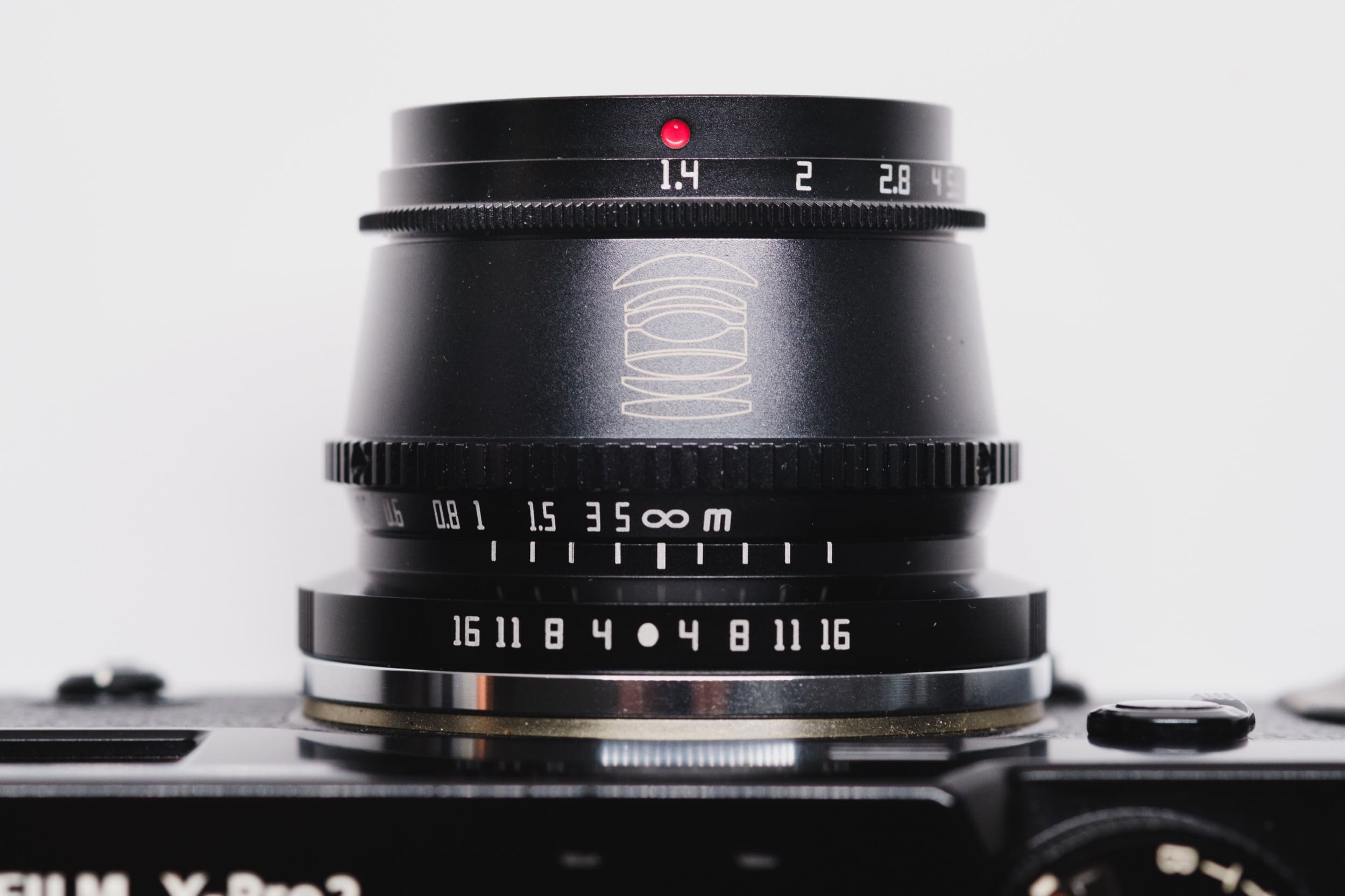
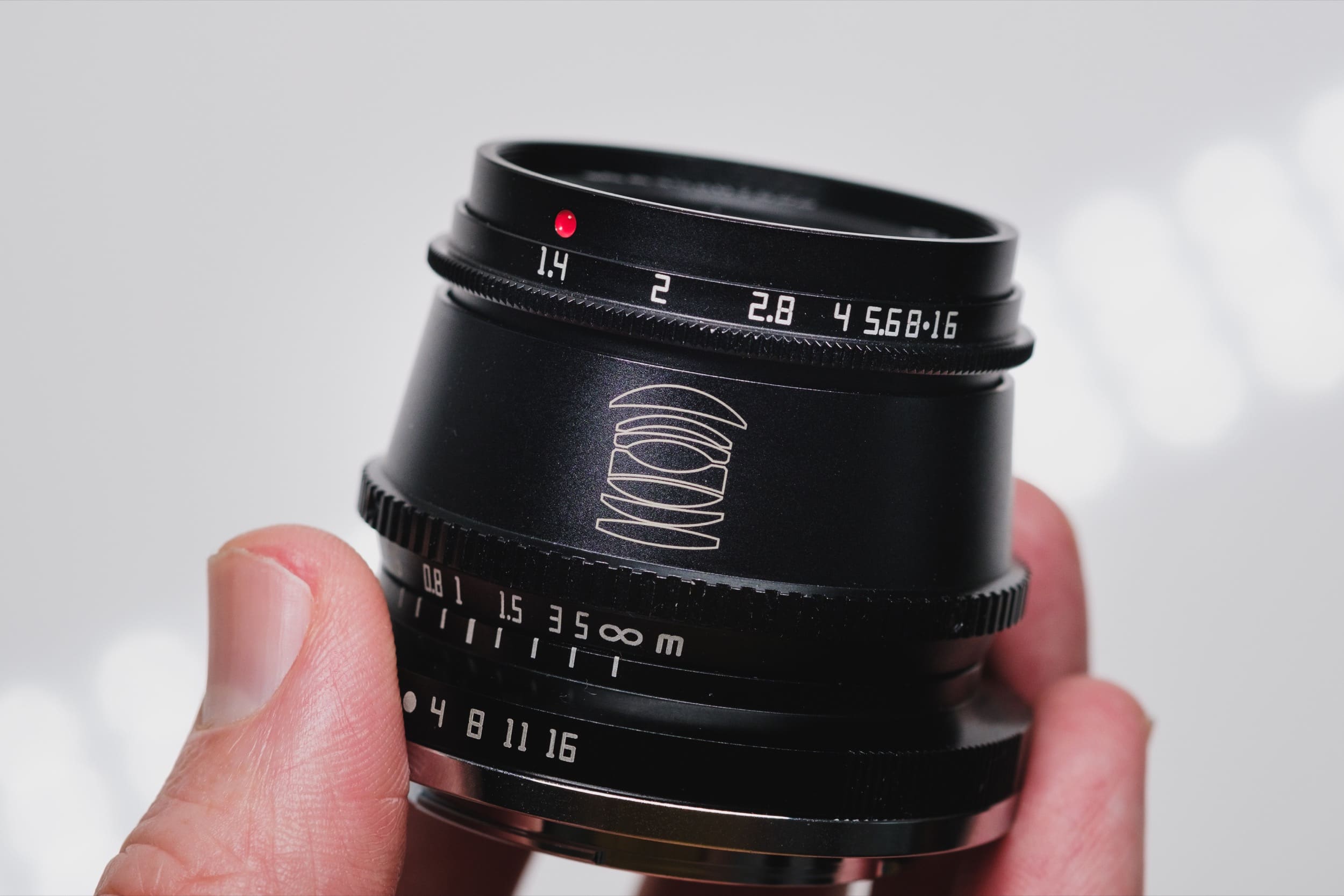
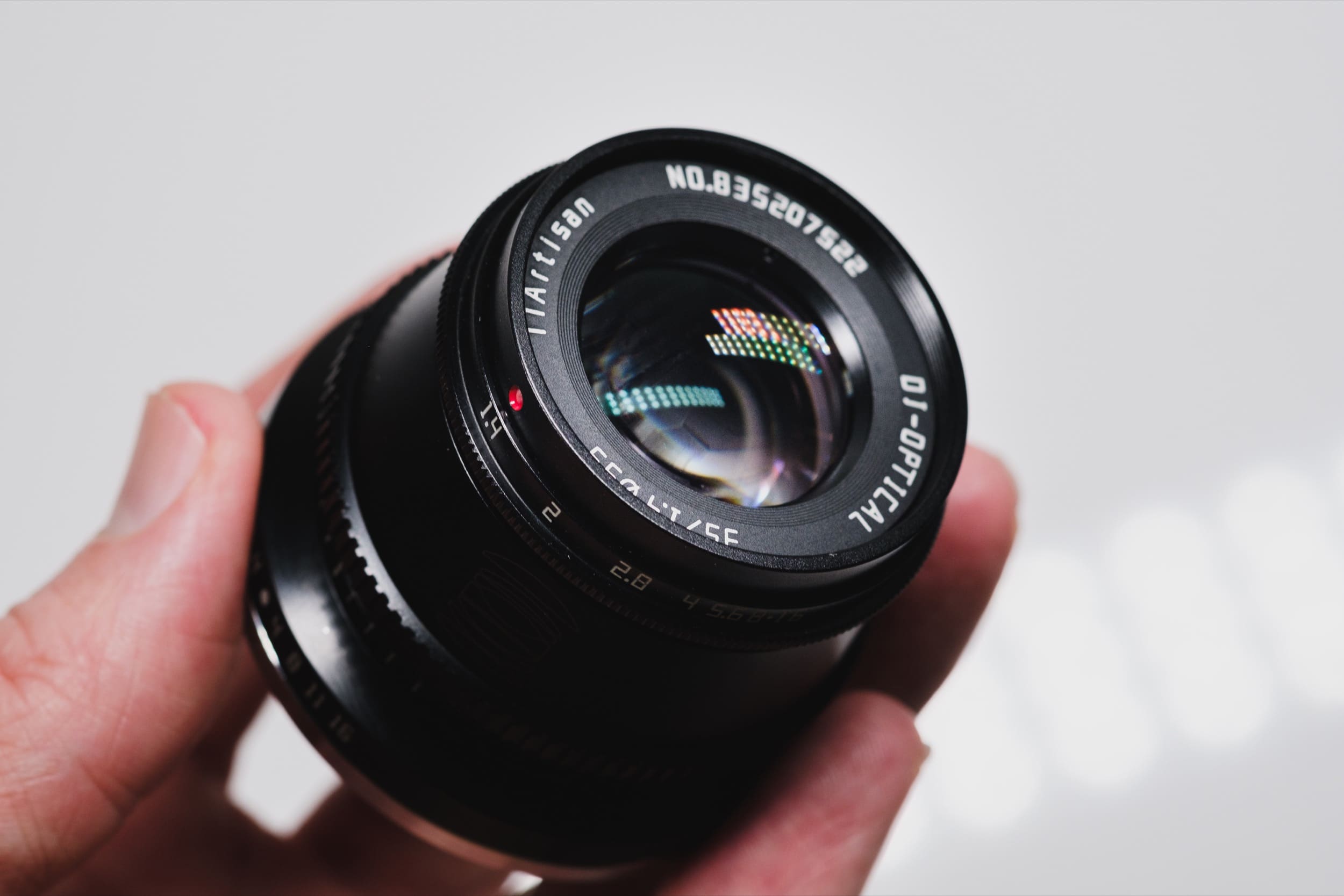
In terms of image quality and optics, it’s great. I have yet to find a situation that causes this lens to struggle. This is rare for a lot of these cheaper lenses. Usually, the Meike or 7Artisans have pretty simple coatings, or internal light scattering or something, and they will often struggle in bright glaring lighting conditions.
Contrast and color are almost always good with the TTArtisan 35mm f1.4 which tells me the coatings are good and the internal design is good.




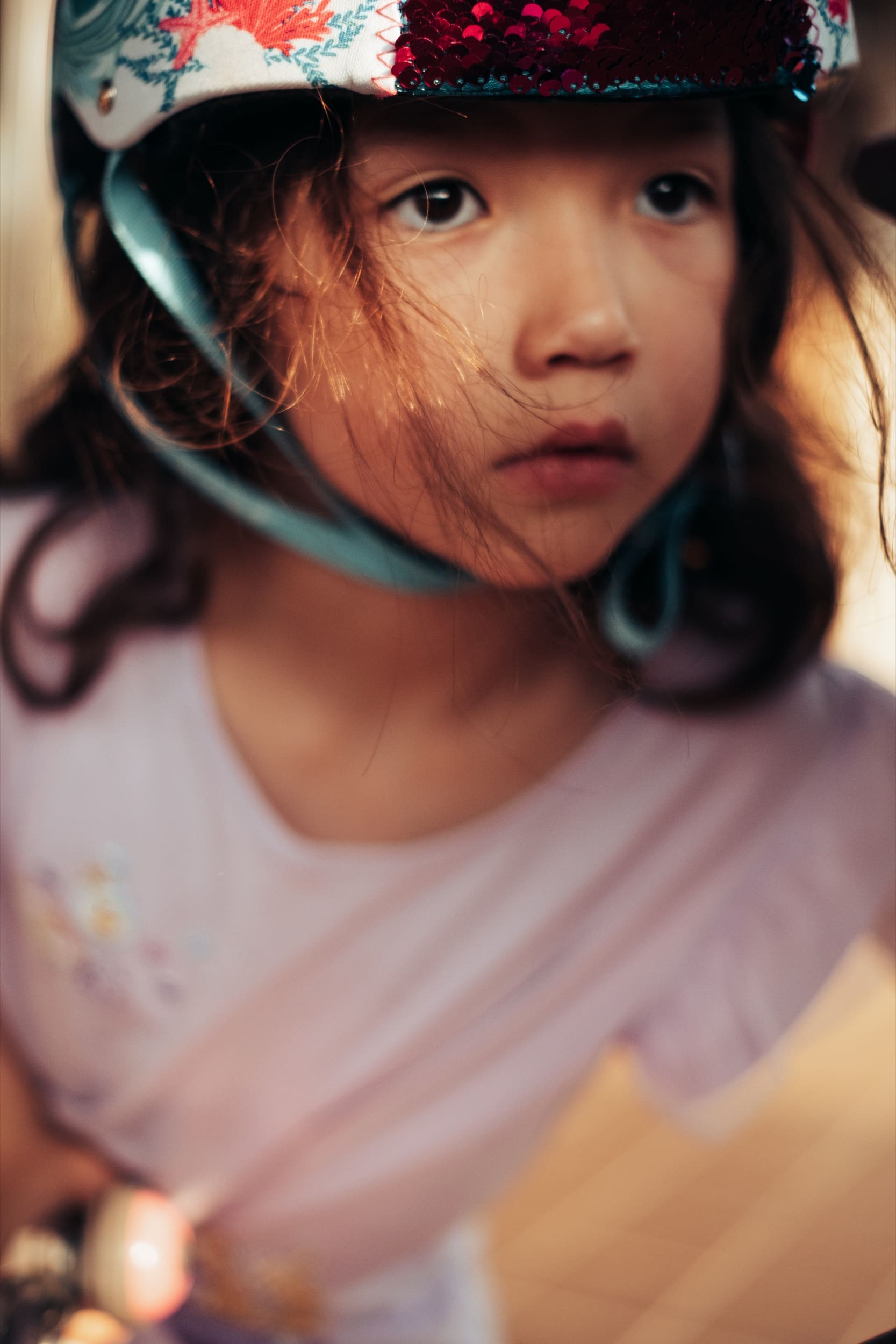
I’m not sure why this lens feels like it renders way nicer than my Meike 35mm f1.4. Possibly I didn’t have a great copy of the Meike, but this lens just handles itself so much better wide open and feels like it pulls in more color and contrast even though the Meike 35mm f1.4 uses more elements. I would guess that the TTArtisan 35mm f1.4 is a longer design with better coatings. Usually longer or bigger lenses will perform better than a pancake, and this might be what we are seeing here.
Interestingly the TTArtisan 35mm f1.4 does handle CA surprisingly well too, but there is a bit of distortion.
Technical Characteristics
Technicals are pretty good with this lens. A few little problems but nothing serious.
TTArtisans 35mm f1.4 Sharpness Chart
In terms of sharpness, it’s pretty sharp in the center and decently sharp around the edges and corners, but it all really cleans up at around f5.6 and f8. It could have been better, but there are no aspherical elements, and again, it’s a very small lens.
Center Sharpness
Fairly sharp wide open without too much of that ghosting effect you get from a lot of fast lenses. F8 even looks good without too much diffraction. You’ll probably want to avoid f16.
There is no f11 on this lens, it jumps from f8 to f16.
Corner Sharpness
A little smudgy in the corners until about f4. You can see the vignetting here in those corners which really isn’t that bad.
You can also see the little astigmatism pattern holds up pretty well (that circle thing). A little bit of a vertical softness, where the top and bottom get a little less sharp compared to the left and right. If you’re doing Astro and don’t want any weird coma, you want those circle patterns to be very even and consistent. This lens is really not bad at all, but it’s not 100% perfect. You will likely get some streaks in the extreme corners of the lens with your stars.
MTF chart would show a little divergence between the sagittal and meridional lines, but nothing massive across the different measurement line pairs which you can visually see with these little lines I use on my charts. Pretty cool hu? Now you know why I put those there.
If you’re wondering what really bad astigmatism looks like, check out the Canon RF 35mm f1.8 corner chart where the center details of the line feel a bit more lopsided and CA shifts purple and green between lines. It’s one of the worst Astigmatism lenses I’ve ever seen (likely by design to make you still want L glass / I’m not sure why everyone gives it such good reviews).
Edge Sharpness
Same as the corners, a little soft in the edges. Sharpens up towards the center. Vignetting is not so bad on the edges.
With this lens, they really did a good job of correcting what they could without making the lens clinical, so it still produces that great classic rendering. Their coatings are great and the lens is very functional in most situations.
I’m also not seeing that strange white flaring or blooming as we saw on the TTArtisan 50mm f1.2, which makes me think something a little different is going on here with the optics or coatings.
The only problem I have with this lens is the slightly softer edges and corners when at those faster apertures, but this is mostly a field curvature thing, and you can get a lot of that back if you focus on those specific points of the lens.
You also have to watch out for that little bit of distortion which is barely showing up in any of these samples so I would say it’s nothing serious.
Distortion Sample
There is some barrel distortion. It’s nice and even at least. Not terrible, but not great either. I haven’t noticed it too much when shooting on the streets, but if you want to shoot landscape or if you like to shoot a lot of shadows and buildings, you could probably easily set up a profile to correct for this.
TTArtisan35mm f1.4 Vignetting
Vignetting is very well controlled for an f1.4 lens of this size.
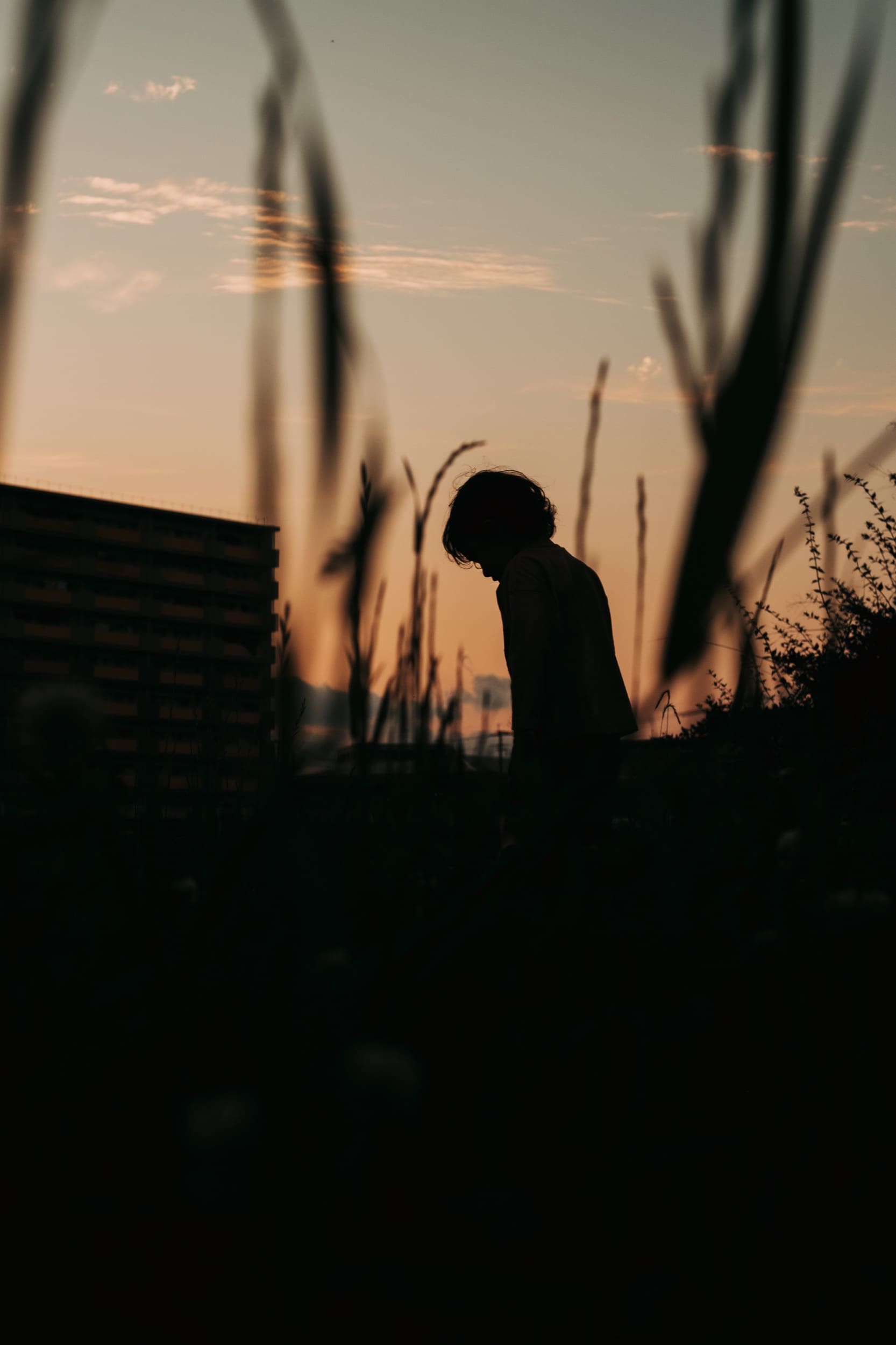



Art & Character
The Bokeh
Bokeh is nice. Soft and smooth most of the time. 10 aperture blades always look nice.
You do get that field curvature, so the focus plane is not super-even. You can see this in the last shot of the grid. The Fujifilm 35mm f1.4 does this too and it always made for a cool effect. You get that deeper-looking depth towards the center shifts more shallow toward the edges.
Whereas if you compare it to a Nikon Z 50mm or Sony GM, you’ll get an almost perfectly straight and even focus depth across the whole lens. This often produces a 3D cutout effect, whereas, in these lower-element lenses, you get a 3-dimensional tonal pop effect. These simpler lenses often use fewer elements, so you get better color and tonal details, as long as the class and coatings are good. These two looks lenses often get confused, 3d pop, lens pop, etc, but there is a massive difference between these two styles of depth a lens can render. I like them both for different reasons and on different occasions.
On this lens, you do get a bit of a swirl too which you will see if you have a detailed background and of course some cats-eye bokeh along the edges.

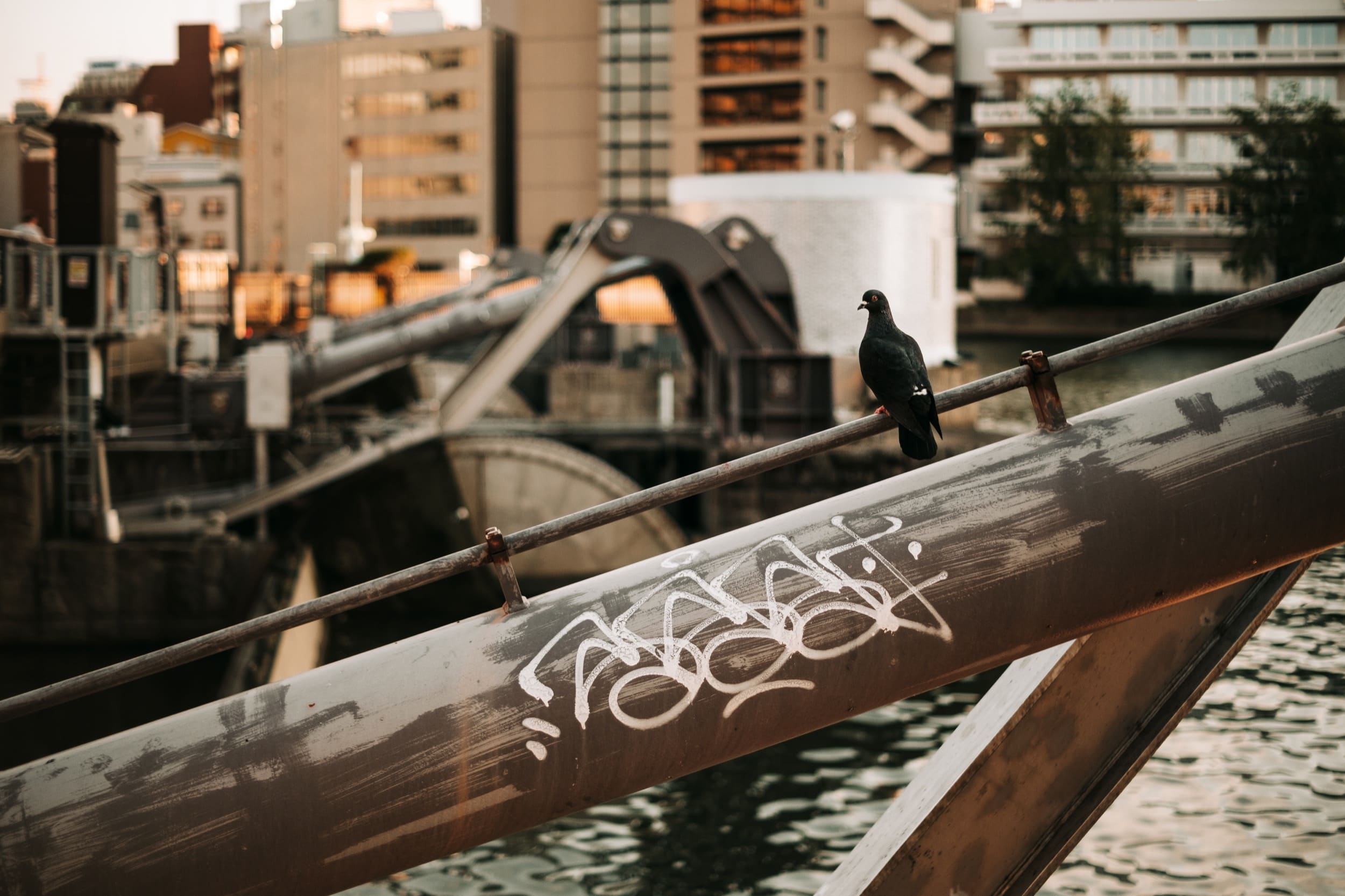
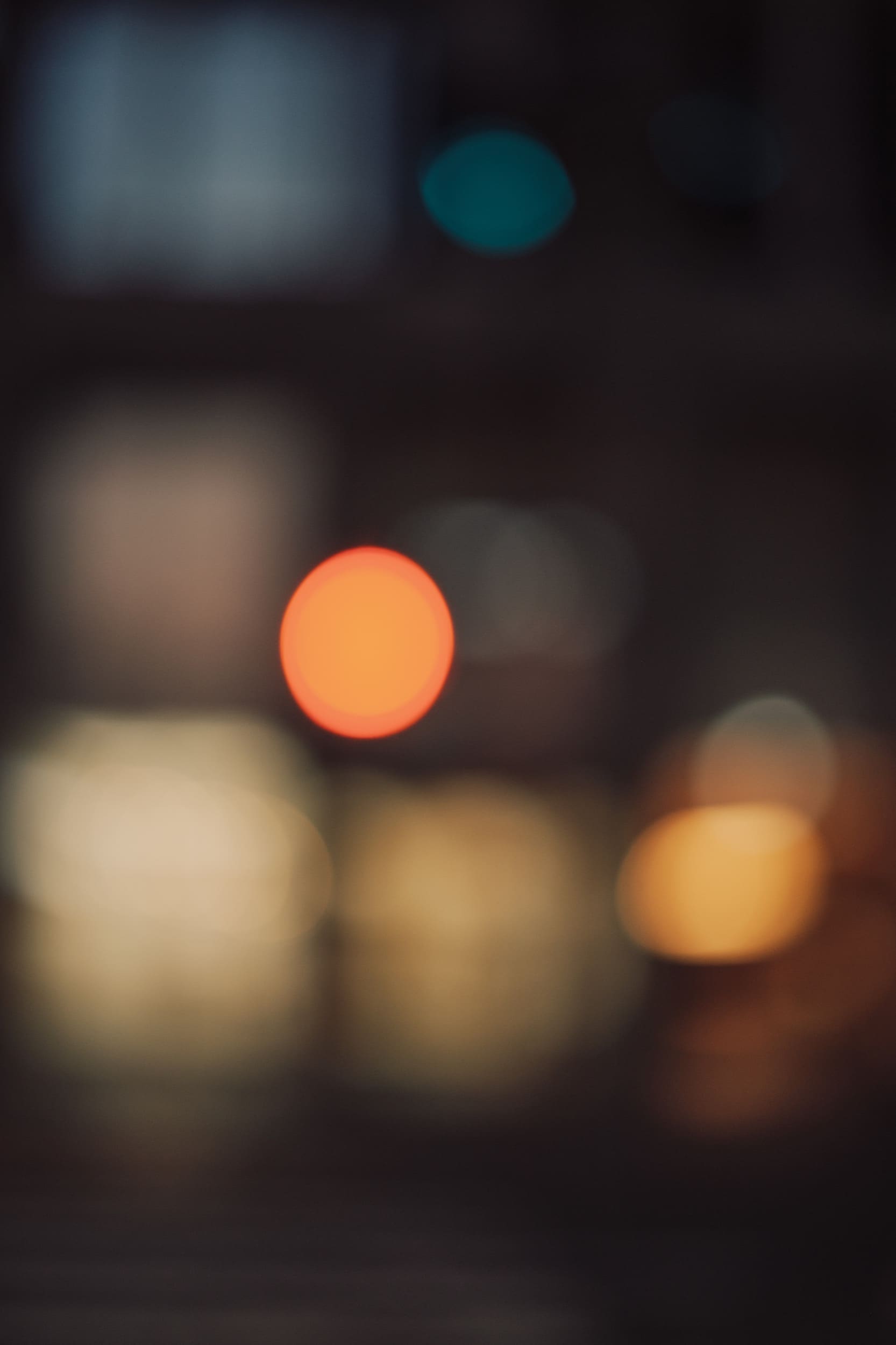

Focus Falloff
There is also a focus cool falloff effect a lens can have. It’s that buttery-smooth transition between what’s in focus and what’s out of focus. I see this a lot with Leica M lenses by Leica and Voigtlander. My Voigtlander 35mm f1.7 Ultron does this better than any other lens I own, a true gem. I think the rangefinder systems like to make lenses this way because it makes it not so obvious when you miss focus since there is never a precise razorblade peak of detail from what’s in focus and what’s out of focus.
Most of these cheaper lenses including this one are just ok when it comes to this. I’ve yet to see one that really impressed me with this. I imagine you would have to make the lens a little larger since it seems none of the small lenses do this well.
It does feel like this lens is a little better than most of the other cheaper lenses I own, but as you can see from this sample, it doesn’t quite have the magic of the Voigtlander, but not bad for APS-C.
Do I recommend this lens?
I do think this lens definitely dethrone my little Meike 35mm f1.4, and I even now prefer it over the Meike 35mm f1.7 that I loved so much. I will say, Pergear and Meike do have a lot more character in terms of the way they flare, but I just think for general shooting, this is a very nice practical option that can handle itself a little bit better and various situations and the f1.4 aperture is nice at night.
In general, these Chinese lenses continue to get better over the years. I feel like every time a new lens is released, there is a pretty significant improvement from what was done a few years ago.
I will say that the Meike, 7Artisans, and Pergear lenses do have a more classic style of rendering, by allowing the lenses to flare and bloom. However, TTArtisan lenses strike a nice balance between modern but not too modern, while not overstuffing the lenses with a pound of glass to correct for every little anomaly.
I would probably still pick up my Pergear if I wanted to have some fun with some soft bloom and flaring from bright sunlight. So if I wanted a nice combo set, I would go with the Pergear lenses for the character, and the TTArtisans for a bit more casual shooting. Meike and 7Artisans would be somewhere in between.
I think the point of a lot of the 35mm Meike and 7Artisans lenses is they are a little more compact with pancake designs so they suffer a little more from some negative characteristics like vignetting or distortion due to that smaller size.
I personally wouldn’t buy the 7Artisans 35mm f1.2 or Meike 35mm f1.4 anymore unless you’re going for a specific characteristic they offer. Just buy this lens instead, it’s the better lens if you’re going for the shallow depth.
If you want the f1.2 with some fun bokeh, go for a Pergear 35mm f1.2, but this TTArtisan 35mm f1.4 is still a better choice for all-around practical everyday use.
And really, the main thing I personally like is that clickable aperture ring and better control under harsh lighting.
In general, I am impressed, and I will order more TTArtisan lenses.
This lens, and the 50mm f1.2, I can say I recommend this if you’re into this sort of thing. And currently, my favorite for the crazy flaring/character is the Pergears lenses. But I shouldn’t generalize because the Pergear 12mm is nice for the price and doesn’t flare like the other ones.

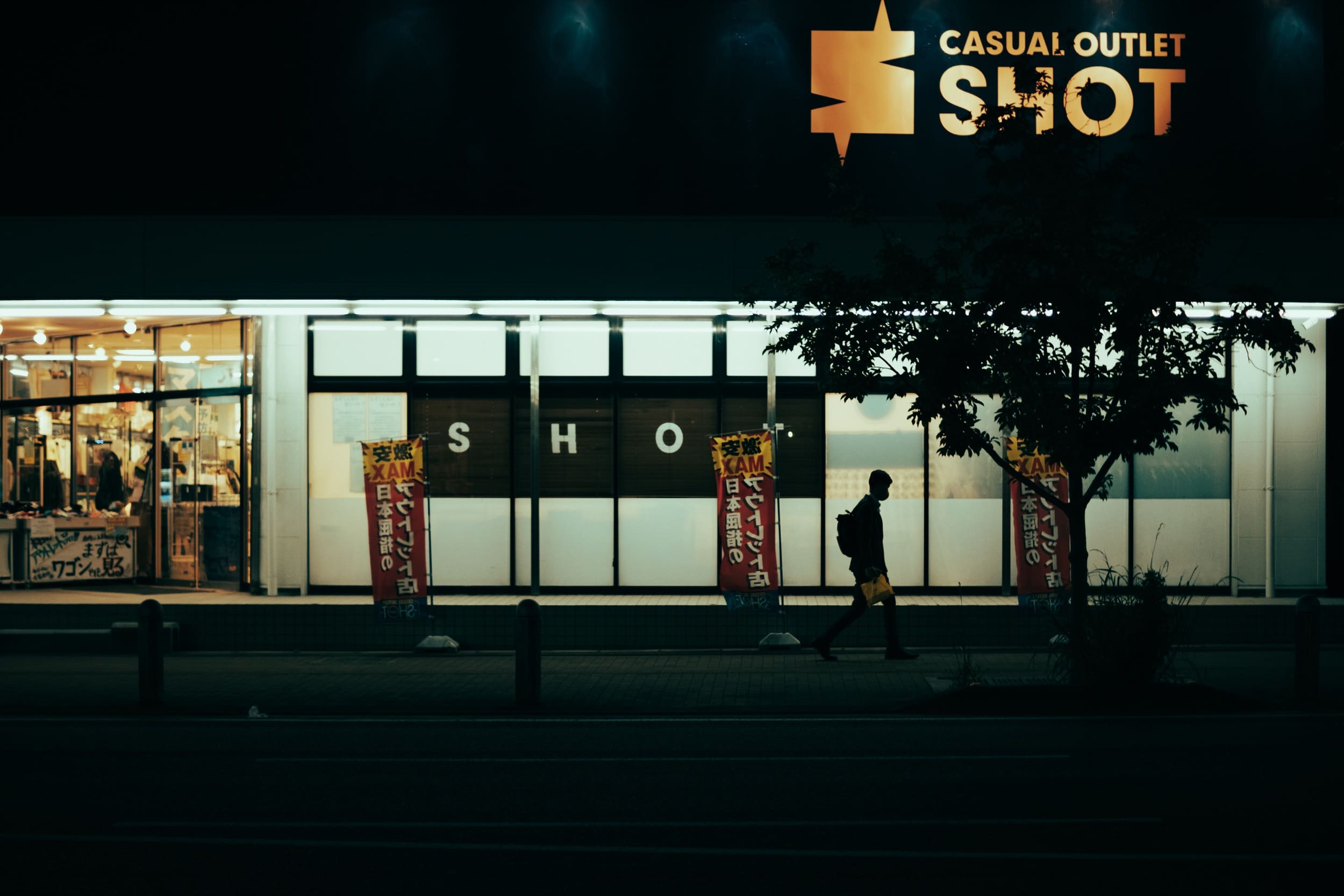
Notes On The Look / Presets
I’ll have a new version of the presets available very soon. A lot has changed. A lot. If you already own them, you will be able to just log in to download the new version.
Since Lightroom has introduced the new Color Grading tools, a lot of new techniques and tricks have become available and I incorporate them into the new version of the presets. Plus I tuned up pretty much every look in the pack to get the color harmonies a little nicer as well as added some new Elements and some new Sepia looks.
They are much more flexible now and you can get so many new looks out of them.
I’ve been liking the warmer film-like edits lately, but since the muted Cine look (because of the Joker) is exploding in popularity now, I wanted to incorporate a workflow that allows for that as well, which is taking me some time because it’s a tough look to get right and is hard to build presets for since it can be so shot to shot specific.
I’m more active on Twitter now so be sure to follow me over there for updates and check out my Instagram to see what weird color grading I’m experimenting with. I can’t bring myself to always just do the same look, which is why I’ve built presets that can be very flexible. I have a few IG accounts but this one I linked is my more experimental one.
TTAritsan 35mm f1.4 Sample Photos
Most of the samples in this review are shot with the Fujifilm X-Pro2. The test charts are all shot on the Fujifilm X-T3.
| **This website contains affiliate links. We will earn a small commission on purchases made through these links. Some of the links used in these articles will direct you to Amazon. As an Amazon Associate, I earn from qualifying purchases. |

